Ever imagined your garden bed collapsing, rotting, or warping right before harvest time—just because you chose the wrong material?
It might sound like a rare disaster, but it happens more often than you’d think. One heavy rain, a stretch of scorching sun, or some hungry pests—and the raised bed you carefully built can fall apart in no time.
So, what is the best materials for raised garden beds?
Let’s walk through the most common options, their pros and cons, and the key things to consider before you make a choice.
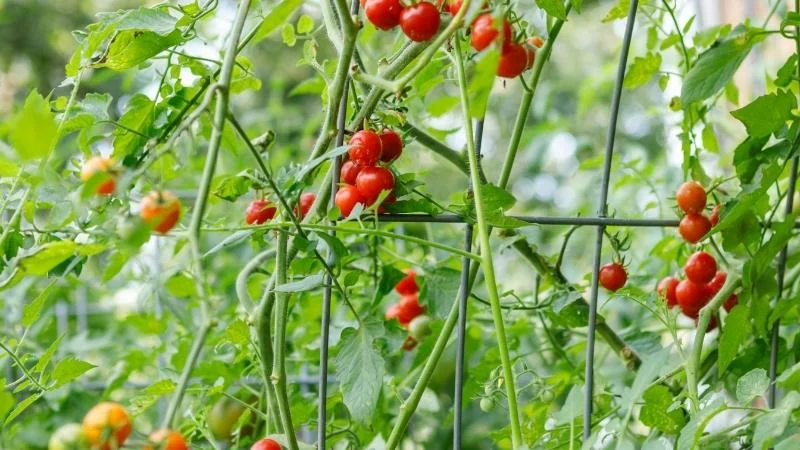
I. What Grows Best in Raised Beds?
Did you know that certain crops thrive better in raised beds—and there are clear reasons why?
Raised beds offer better control over soil quality and drainage, creating an ideal environment for many types of plants. But not everything belongs in a raised bed. Here’s a quick breakdown of the crops that are especially well-suited for raised garden beds in American backyards—along with why they’re a great fit.
1. Leafy Greens
📌 Examples: Lettuce, kale, spinach, arugula
Growth traits:
• Fast growers
• Harvestable multiple times in short cycles
• Shallow roots; no need for deep soil
Why they work well in raised beds:
• Excellent drainage keeps soft leaves from rotting
• Loose soil in beds helps shallow roots access nutrients easily
• Easier to manage weeds and soil-borne pests
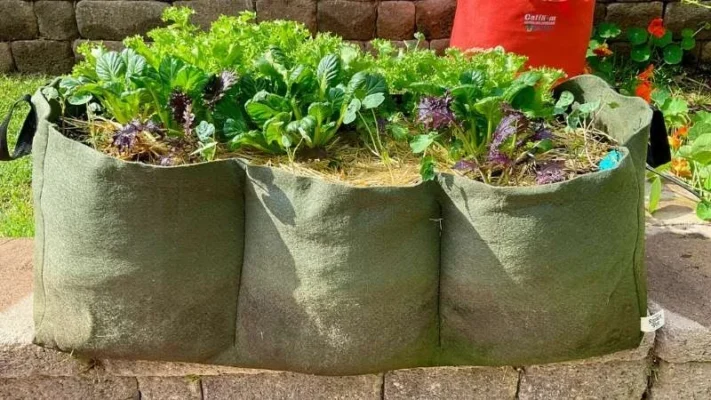
2. Culinary Herbs
📌 Examples: Basil, parsley, cilantro, chives, thyme, rosemary
Growth traits:
• Don’t need much space
• Can be harvested repeatedly
• Love sun and well-drained soil
Why they work well in raised beds:
• Keeping herbs together in a bed makes them easier to tend and harvest (especially if it’s near the kitchen or patio)
• Soil pH and texture can be customized for each herb’s needs
• Prevents waterlogging during rainy spells
3. Short-Season Root Vegetables
📌 Examples: Carrots, radishes, beets, turnips
Growth traits:
• Require loose, deep soil for straight, healthy roots
• One-time harvest per plant
• Sensitive to compacted soil and overcrowding
Why they work well in raised beds:
• You control the depth and texture of the soil
• Fewer rocks and obstructions mean straighter, more attractive roots
• Good drainage reduces risk of root rot
4. Fruit-Bearing Plants
📌 Examples: Cherry tomatoes, peppers, cucumbers, bush or pole beans
Growth traits:
• Larger plants that need lots of sun
• Often require staking or trellises
• Produce over a longer period in multiple waves
Why they work well in raised beds:
• Raised beds support trellises or stakes more securely
• Better airflow and drainage help prevent disease
• Easier to plant in neat rows for even growth and easier maintenance
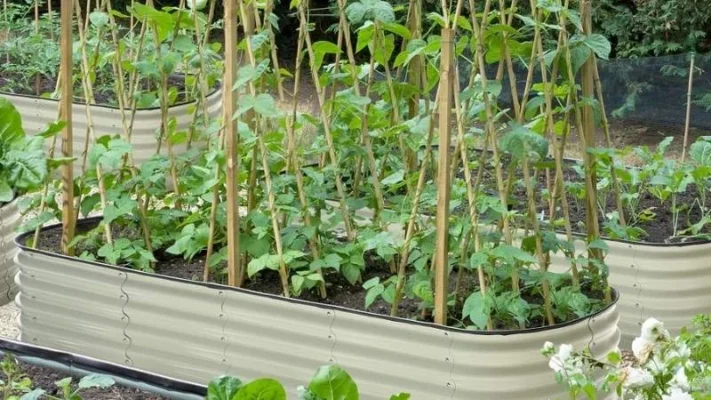
5. Seasonal Crops
📅 Based on temperate U.S. growing seasons:
• Spring: Peas, spinach, arugula
• Summer: Tomatoes, cucumbers, basil
• Fall: Kale, carrots, beets
Why they work well in raised beds:
• Easy to adapt soil, fertilizer, and mulch for seasonal changes
• Makes crop rotation simple and efficient, reducing pest cycles
• Quick topsoil refresh or amending between seasons
👉 In short:
A raised bed isn’t just soil mounded above ground—it’s a strategic tool to help each crop reach its full potential. When you match the right plant to the right raised bed setup, you’ll see the results: fresher greens, healthier roots, stronger plants—and a more productive garden.
II. Choosing the Right Bed Size for Your Plants
You now know that leafy greens, root vegetables, and tomatoes all thrive in raised beds—but not all raised beds are built the same. Once you know what you want to grow, how much to grow, and who you’re growing it for, it’s much easier to pick the ideal size.
1. Define Your Growing Needs
Before you grab a shovel, take a few moments to ask yourself:
• Are you planning to grow a variety of crops, or focusing on a specific group (like only greens, or just fruiting plants)?
• Will you be gardening year-round or just during certain seasons (like summer tomatoes or fall kale)?
• How many people are you feeding? If it’s just 1–2, a couple small beds may be enough. For a family of 4–5, you’ll need more space to meet daily needs.
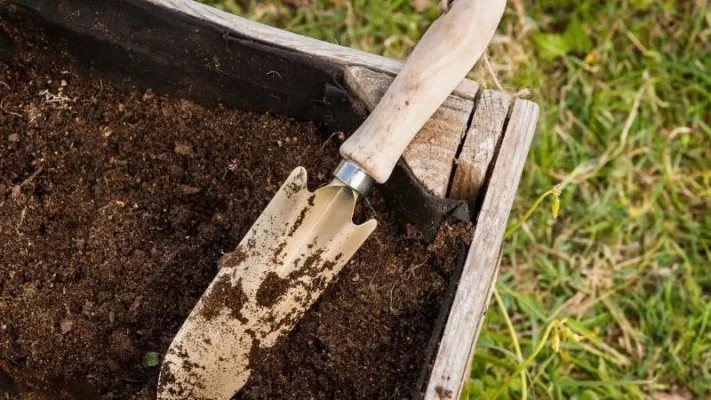
2. Estimate the Growing Area You’ll Need
Once you’ve clarified your goals, estimate your growing space. A simple rule of thumb:
• 👉 A 4×8 ft raised bed can supply a steady harvest of greens and herbs for 1–2 people all year, with proper crop rotation.
• 👉 If you want to grow a mix (greens + roots + fruiting crops), break it up into smaller, dedicated beds to simplify care and planning.
3. Common Raised Bed Sizes by Crop Type
To help with layout and material planning, here are three common raised bed sizes used in home gardens:
🟩 Small Beds
• Height: ~0.5–0.7 ft (15–21 cm)
• Width: ~2–3 ft (60–90 cm)
• Length: ~2–3 ft (60–90 cm)
📌 Best for:
Tight spaces like balconies or small patios, and shallow-rooted crops like:
lettuce, spinach, arugula, kale, basil, scallions, garlic, dill, parsley, chives
🟨 Medium Beds
• Height: ~0.8–1.2 ft (25–36 cm)
• Width: ~2–3 ft (60–90 cm)
• Length: ~4–5 ft (120–150 cm)
📌 Best for:
Mid-sized crops or mixed-planting setups:
spinach, kale, carrots, radishes, beets, tomatoes, peppers, cucumbers, beans
🟥 Large Beds
• Height: ~1.5–2 ft (45–60 cm)
• Width: ~3–4 ft (90–120 cm)
• Length: ~5–8 ft (150–240 cm)
📌 Best for:
Spacious yards, deep-rooted or large-canopy crops:
potatoes, long carrots, zucchini, squash, pumpkins, watermelons, cantaloupes
🛠 Tip:
Keep the width under 4 ft so you can reach the center from either side without stepping into the bed (which compacts the soil).
Bed Recommendations by Household Size
Here’s a quick reference based on common household gardening goals in the U.S.:
• 👤 Single-person household
→ One 2×4 ft small bed is plenty for greens and a few herbs
• 👩👩👦 2–3 person household
→ Plan for 2–3 beds, each 4×4 ft or 4×6 ft
Mix it up: one bed for leafy greens, one for root crops, and one for taller fruiting plants like tomatoes
• 👨👩👧👦 4–5 person household or more
→ At least 3–5 beds, including one large 4×8 ft bed for space-hungry or high-yield crops
💡 Of course, this is just a guide. Tailor your beds to your yard, eating habits, and favorite plants.
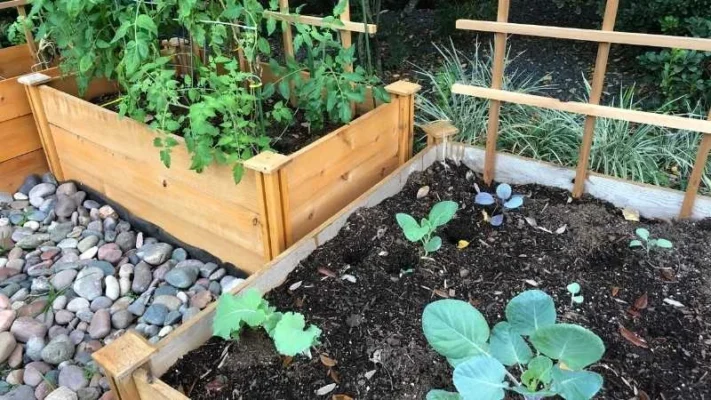
Is One Big Bed Better—or Two Small Ones?
A common question from beginners:
👉 “Should I build one big 4×8 ft bed, or split it into two smaller 4×4 ft beds?”
Our take: Two small beds usually win. Why?
• Easier to reach from all sides without stepping in
• Better drainage—especially in rainy regions
• Safer bet: If one bed gets a pest problem, the other’s still good
• Flexible planting: You can vary the soil mix, moisture, or fertilizers between beds
🎯 Another benefit: stagger your planting. Start one bed at the beginning of the month, then the next one 1–2 weeks later. This spreads out your care and harvest schedule—a lifesaver for part-time gardeners.
That said, large beds still have their place. If you’re growing vining plants like melons or squash—or want to train a big row of tomatoes—then a 4×8 ft bed gives you room to set it up right without sacrificing aisle space.
👉 Bottom line: There’s no “right” or “wrong” bed size—only what works best for your garden.
If you’re just getting started, or want the most flexibility, go with two small beds to begin with. You’ll learn faster, have more control—and enjoy gardening a whole lot more.
III. How to Choose the Right Material (Once You Know the Size)?
So, you’ve figured out what you want to grow and what size bed you need. Now comes the final step—and often the most frustrating one: choosing the right material.
Trust me, picking the wrong material could mean redoing the whole bed after just one season— frustrating and costly. But get it right, and your raised bed could last 5 to 10 years or more without a hitch.
So, what materials are out there? What are their pros and cons? And which ones work best for small, medium, or large beds?
With help from my dad, we’ve put together the table below. Bookmark or screenshot it for quick reference when shopping:
🔍 Comparison Table: Raised Bed Materials
| Material | Main Benefits | Drawbacks / Warnings | Estimated Lifespan | Best for Bed Size |
| Cedar wood | Durable, beautiful, naturally rot-resistant, easy to build | Expensive, not always available | 8–10 years | All sizes (esp. small–medium) |
| Untreated pine | Cheap, easy to find and cut | Rots quickly, short-term use only | 2–3 years | Temporary or short-term beds |
| Pressure-treated pine | More durable than untreated, reasonably priced | May contain chemicals (choose newer, safer types) | 5–7 years | Large or long-term beds |
| Composite wood | Won’t rot, low-maintenance, looks good | Heavy, expensive, hard to disassemble | 10–15 years | Permanent beds |
| Galvanized metal | Lightweight, affordable, easy to set up | Can overheat in summer, sharp edges need covering | 7–10 years | Small–medium beds, fluffy soil |
| Concrete blocks / cinder | Extremely durable, pest-proof, flexible layout | Heavy, not pretty unless painted | 20+ years | Large, permanent beds |
| Fabric grow bags | Cheap, quick setup, great drainage | Short lifespan, can sag with heavy soil | 1–3 years | Small, short-term use |
📌 Material Tips Based on Bed Type & Gardening Goals
1. Small beds – on the ground, quick-harvest veggies:
→ Go for fabric beds, cheap pine, or light metal with edge guards. Great if you’re testing things out.
👉 Learn more about fabric beds: Fabric Raised Beds: Affordable & Flexible for Urban Gardens
2. Medium beds – year-round growing, 3–5 seasons use:
→ Choose cedar if budget allows, or new-generation pressure-treated pine (look for “safe for food use” labels).
3. Large beds – heavy use, maybe irrigation or built-in drainage:
→ Concrete blocks or landscape bricks are ideal. Build once, use for decades. Pest- and weather-proof.

💡 Pro Tips When Choosing Materials:
• Don’t go with the cheapest option—unless you’re only gardening for a single season.
• Always cover sharp edges on metal beds to avoid injury.
• Thicker wood = longer life. For wooden planks, go at least 1.5 inches thick (≈ 3.8 cm).
• With cinder blocks, you can slide PVC or bamboo stakes into the holes to build trellises—super handy!
🛍️ Top Product Picks by Material
Material Recommended Product
Greenes Fence Premium Cedar Raised Garden Bed
Raised Garden Bed, 4×4×1ft Galvanized Steel
LINEX Galvanized Raised Garden Bed
Fabric Grow Bags, 2-Pack Raised Garden Bed with Handle
Raised Garden Bed Tomato Planter with Trellis
Note: These are affiliate links. If you buy through them, FarmGears earns a small commission—at no extra cost to you. Thanks for supporting our work!
🌿 One Last Thing (That Most People Forget)
Think you’ve picked the perfect material? Maybe not just yet.
Here’s something most beginners overlook—and it’s a hard-earned lesson from longtime gardeners:
👉 You need to think about trellises from the start.
Why?
• Many plants require vertical support—tomatoes, cucumbers, peas, pole beans…
• Not every bed material supports a trellis easily:
o Fabric beds? You can’t attach anything directly.
o Wood? Easy—just screw in brackets or hinges.
o Concrete or metal? You’ll likely need to drill, anchor, or customize.
Also ask yourself:
• Is your bed tall enough to anchor a trellis?
• Do you have the skills or tools to build one at home?
👉 If you plan to grow tall or climbing plants, choose a bed material that plays well with trellises. It’ll save you a ton of time and hassle later.
Everything above comes from real-life experience. Still, when choosing your bed material, always factor in:
• Do you want this for long-term or just a season?
• Is your budget tight?
• Does appearance matter to you?
• Are you growing edibles for your family?
• Can you DIY, or do you need a pre-built solution?
• Will you need to move it later?
And above all, know where your materials come from. Avoid old wood, industrial scraps, or anything with chemical treatments unless you’re absolutely sure it’s food-safe.
IV. 🌱 Tips & Reminders for Caring for Plants in Raised Garden Beds
(Especially helpful if you’re new to gardening or have little experience growing vegetables)
Raised beds offer great benefits—improved drainage, weed control, and better soil—but growing plants in them still requires a slightly different approach than planting directly in the ground. If you’re just starting out or have faced issues like stunted growth, overly dry soil, or sudden pest attacks, these tips can help you avoid common pitfalls and grow a healthier, more productive garden.
1. 💧 Smart Watering
• Not all plants need the same amount of water:
• Leafy greens like evenly moist soil, but don’t overwater.
• Root crops (carrots, radishes): need deep, well-drained moisture.
• Herbs (rosemary, thyme): drought-tolerant; water sparingly.
• Raised beds drain quickly → In hot weather, you may need to water more often.
• Drip irrigation is highly recommended: saves water, reduces disease risk, and promotes even growth.
2. ☀️ Light – How Much Is Enough?
• Most vegetables need at least 6–8 hours of direct sunlight daily.
• Have a part-shade garden? → Try shade-tolerant crops like lettuce or spinach.
• Pro tip: Position your beds so that all plants receive equal sunlight and avoid taller plants shading smaller ones. 👉 For climbing plants like tomatoes or beans, using the right trellis setup can also help maximize sun exposure and ensure healthy growth — learn how to choose the best trellis for your raised beds here: Garden Bed Trellis: Why It Matters More Than You Think.
3. 🌾 Soil Care Matters
• After each growing season, add compost or organic fertilizer.
• Every 2–3 years, replace the top 5 inches of soil to avoid salt buildup or soil-borne diseases.
• Use mulch (like straw or wood chips) to retain moisture and suppress weeds.
4. 🌼 Crop Rotation & Interplanting
• Planting the same crop repeatedly depletes nutrients and invites pests.
• Try a simple rotation: Leafy crops → Root crops → Flowering veggies → Repeat.
• Small beds? Go for interplanting: mix leaf and root crops in the same space for higher efficiency.
5. 🐛 Natural Pest Control
• Plant pest-repelling companions like basil and marigolds around your beds.
• Use fine mesh row covers at the start of the season to block bugs.
• Check leaves regularly for early signs of pests and act quickly.
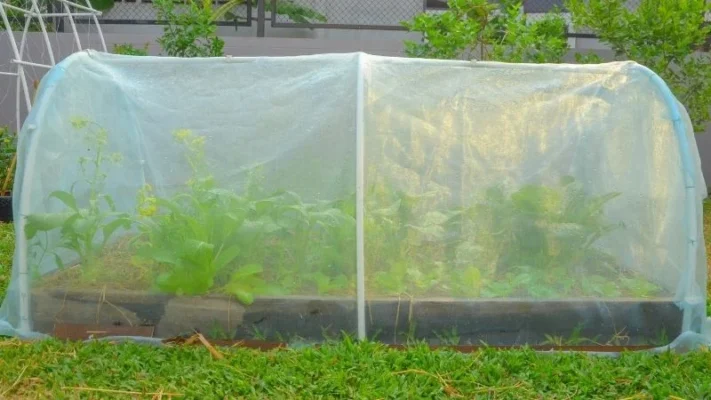
6. 🔁 Track Your Progress
• Label your plants with names and seeding dates.
• Keep a garden journal (or use an app) to monitor what works and improve each season.
7. ☔ Use Rain Covers – Protection for Bad Weather
• Reduce rain splash to prevent leaf damage and soil erosion.
• Prevent overly wet soil and root rot during heavy rain.
• Choose a 60–70% shade net to allow light through while helping soil and leaves dry faster post-storm.
V. Conclusion: The Material Is Just the Frame — Knowing Your Plants Is the Foundation
This guide is a reflection of real-life gardening experience—from balcony herb trays to backyard raised beds. We’ve considered various climate zones across the U.S.—from the rainy Pacific Northwest to the dry, sunny Southwest—to help you pick the most suitable materials for your beds.
But we didn’t stop at listing materials. We broke everything down by bed size, usage duration, and plant type, so you won’t have to guess when building your garden. Whether you’re using small, medium, or large beds, each requires a different material strategy to ensure longevity, safety, and success.
And above all, there’s one gardening truth that never fails:
👉 If you want plants to thrive, you have to understand what they need.
You can spend on the sturdiest, most expensive raised bed material—but if you choose the wrong crops, or ignore their sunlight, soil, or water needs, all that effort could go to waste.
So start with your real goal: Are you growing food for your family? Just testing the waters? Looking to build something long-term?
Then choose materials smartly, know your plants, and you’ll build not just a garden—but something sustainable and worth being proud of. 🌿

